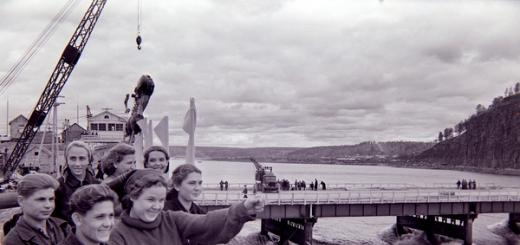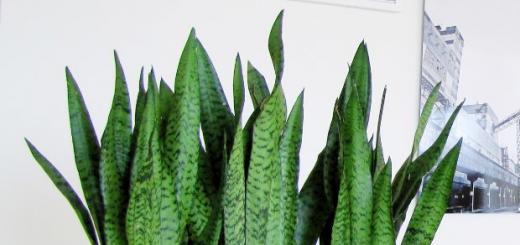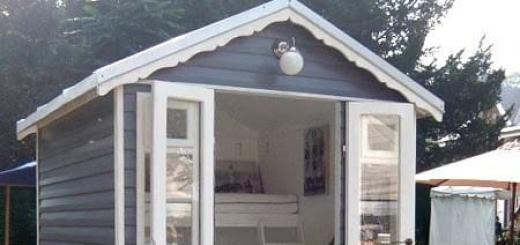The deadlift has never been held in high esteem by beginners, it is too hard and dangerous exercise. It so happened that the chest and biceps have always been a priority for beginner athletes. Few people understood that without strong legs and a back, biceps cannot be pumped up, and by performing isolation exercises alone, a serious result cannot be achieved.
As a rule, when doing heavy standing bicep curls, beginners get the feeling that they simply do not have enough biceps strength, but in fact, they simply find it difficult to keep the body in balance, since the strength of the back and legs is not enough. By performing deadlifts, you will not only add mass to these muscles, but also make them much stronger. Well, strong legs and back are the base, without which you simply cannot pump up. The inflated back becomes a powerful support for the muscles of the shoulder girdle, which allows them to show stronger muscle effort. The legs have the same function. They act as a support. In addition, having a small personal weight, and working weights will be small. Well, which muscle groups give the most mass? That's right, legs and back!
The deadlift is just the exercise that shocks these two muscle groups. There are simply no other exercises like this. That is why the deadlift leads the athlete to his main goal - a large mass of the main muscle groups.
When representatives of sports science undertook to study the effect of deadlift on the growth of muscle mass, they were surprised a lot. Since the cumulative weight gain did not fit into the principle of simply adding the growth of two muscle groups. Scientific studies have proven that deadlift causes a record synthesis in the body of testosterone and growth hormone - the main anabolic hormones. From this follows the conclusion that the deadlift grows the mass of not only the back and legs, but also the entire muscles.
Indeed, if we consider the deadlift from the point of view of kinesiology, it turns out that this exercise consists of as many as 8 movements. These are leg presses, back extensions, leg curls, crunches, wrist curls, calf raises, rows, and shrugs. Quite an impressive list.
The deadlift seems much harder than the bench press and squat. This is not at all due to the fact that almost all muscles are included in the work. According to scientists, the matter is quite different. For example, when you press the barbell while lying down, at the start, the pectoral muscles are stretched, allowing them to contract more fully. In the deadlift, there is no such preliminary stretching. Hence the whole difficulty of this exercise.
However, as deadlift is useful, it is just as dangerous. This exercise requires strict adherence to the execution technique. It should also be noted that if you have had lower back injuries in the past, then give up the deadlift. The thing is that it significantly overloads the lower back, which can only aggravate the injury or lead to its recurrence. In addition, beginners should not immediately grab the deadlift. The first step is to strengthen the lower back and. Only after a course of such exercises can one gradually begin to deadlift, starting with small working weights and honing the technique to the ideal.
To begin with, you need to learn two fundamental principles: the first is a straight back, and the second is that the bar should be held as close to the legs as possible. The closer it is, the safer the movement will be. It is clear that sliding the neck along the shins is very painful. Therefore, professionals recommend wearing high woolen socks or bandaging your knees and shins.
In general, the deadlift is the best exercise for pumping overall muscle mass. This exercise is included in the training plans of all professional bodybuilders. Are you doing a standup? The answer to this question will be a sure indicator of your motivation. If yes, then you most likely have the right mindset and you have a clear vision of your goals. If not, then perhaps you simply do not understand the meaning of this exercise.
Related videos: "Performing deadlift - multi-rep workouts"
Deadlift - is the basic and one of the most necessary exercises in bodybuilding and powerlifting. When performing a deadlift, an athlete uses 75% of muscle mass. This is one of the most effective exercises for gaining mass. Also, the deadlift is the best exercise for increasing strength per se.
Options and technique
Main working muscles:
- hamstrings
- Buttocks
- Spinal straighteners
- lats
- Upper back muscles
- Quadriceps
- Adductor muscles
- forearms
Initial position:
- Come close to the bar, place your feet shoulder-width apart and parallel to each other.
- Squat down and grab the bar with a straight grip, the grip is slightly wider than your shoulders.
- The arms are vertical, the shoulders are directly above the bar of the bar.
- The gaze is directed forward.
- Inhale deeply and as you exhale begin to pull the barbell.
- After the barbell passes the knees, fully straighten up and bring the shoulder blades together as much as possible.
- Begin the downward movement by pulling the pelvis back. The loin is bent, the shoulder blades remain flattened.
- Having passed your knees, sit down and touch the pancakes to the floor.
Be extremely careful during the deadlift. Watch your lower back, it should always be bent. And, of course, keep the movement smooth, both when raising the bar and when lowering it. Do not try to pull the bar off the floor. Inhale slowly down, exhale - powerfully up.
Tip: Imagine that instead of lifting the bar up, you push your legs into the floor with all your might. This will help you concentrate more and perform the movement correctly.
2. Deadlift "Sumo"
Main working muscles:
- Hamstrings (more so than classic deadlift)
- Buttocks (to a lesser extent than with the classic deadlift)
- Spinal straighteners
- lats
- Upper back muscles
- Quadriceps
- Adductor muscles
- forearms
Initial position:
Come close to the bar, put your feet much wider than your shoulders, turn your toes outward (about 45%), spread your knees to the sides. Your shin should touch the bar and be perpendicular to the floor. Shift your body weight onto your toes and grasp the barbell at shoulder width or slightly narrower. The back is straight, the slope occurs only in the hip joint.
Exercise technique:
- As you exhale, pull the bar up by extending your legs. Bring your shoulders back and pull your shoulder blades together.
- As you inhale, slowly lower the barbell to the floor.
When pulling the bar, do not bring your knees together - this loads the knee joint. Keep your back upright.

3. Deadlift on straight legs with a barbell
Main working muscles:
- Buttocks
- Back of the thigh
- Lower back
Initial position:
Grasp the barbell with an overhand grip slightly wider than your shoulders. Take it off the racks and take a step back. Place your feet narrowly, turn your toes slightly inward. Straighten your shoulders. The back is straight.
Exercise technique:
- Slowly, as you inhale, begin to lower yourself down by pulling your pelvis back.
- Lower the bar to about mid-calf or slightly lower.
- As you exhale, return to the starting position.
Keep the arch in the lower back and do not allow the back to round, as this is very dangerous for the spine. Try to keep your legs as straight as possible, while allowing a slight bend in the knees. The bar should be close to the legs throughout the movement. Please note: since the lower back is always in a deflection, all movement is carried out by flexion and extension in the hip joint. That is why the hamstrings and gluteal muscles work.
Hyperextensions and traction on straight legs are very similar exercises in their essence. If you have spinal problems, you can replace deadlifts with hyperextensions until your lower back is strong.

4. Deadlift on straight legs with dumbbells
Main working muscles:
- Buttocks
- Back of the thigh
- Lower back
Initial position:
Grab the dumbbells with a neutral grip and stand up straight. Place your feet shoulder-width apart or slightly narrower.
Exercise technique:
- While inhaling, pulling the pelvis back and leaning forward, gently lower the dumbbells down.
- As you exhale, return to the starting position.
Bend over by pulling your hips back. Try to keep your legs as straight as possible, but if your stretch does not allow you to lower the dumbbells at least to the middle of the lower leg, you can bend your knees a little. In the lower back, deflection throughout the exercise, do not let the back round. Do not take the dumbbells forward, they should be close to the legs (or almost close) throughout the movement.

Video
- If you have back pain, severe curvature of the spine or other back problems, then consult a good manual or a sports doctor if you can do deadlifts at all.
- Before each approach, apply chalk or magnesia to your hands to more confidently hold the barbell.
- Always wear locks on the bar when deadlifting. Actually, "locks" should be worn at all times. This is necessary in order not to worry that the pancakes can move off the bar. At the moment of recovery, such thoughts should not distract your attention and knock down your mood.
- Both during the ascent and during the lowering of the bar, the weight of the body must not be transferred to the toes. This will be a mistake. In this case, the bar will move forward from the legs, and you may get injured.
- Don't do pull-ups off the floor. By doing this, you greatly facilitate your work and pass at speed the critical point of removing the barbell from the platform. The meaning of such training disappears. Also, bounce can cause the plates on one side of the bar to bounce off the floor faster than those on the other side. This will cause you to lose control of the bar, lift the weight asymmetrically, and put uneven stress on your body. And this is fraught with serious injuries of the spine.

Sumo or classic?
There is a lot of controversy about how best to perform a deadlift. Some say that sumo is better, others say that classic is better. I know very many supporters of both one and the other technique. Some shout that most of the records are set with the help of classical traction, others immediately give examples of traction in the sumo style. I don't want to start a new controversy, so I'll just express my opinion.
First, you don’t need to listen to which style is cooler. Try it yourself. I think if everything was so obvious, then for a long time already all athletes would have pulled with some one style. We are all different, someone will do more with classical traction, and someone will do sumo.
Do not forget that the sumo deadlift has become popular with athletes also thanks to the use of equipment. Typically, sumo pulls are performed by athletes with shorter legs and a long torso, as well as athletes who are not tall. Due to their anthropometric data, they can place their center of gravity low and stretch more. Sumo pulls are also performed by athletes with stronger legs, and classics with a more powerful back.
I recommend practicing both styles, as more muscles will be worked out, and in the end, this will only give a positive result. It is better for novice athletes to start with the classics in order to, nevertheless, strengthen the back muscles, since the legs work enough in squats.

Information for women
Many girls bypass the deadlift, and they do it in vain. In fact, this exercise is very useful not only for men, but also for women. The deadlift is an excellent basic free-weight exercise that stimulates overall muscle growth. Many girls believe that the classic deadlift is a purely masculine exercise that requires large and strong muscles in the back, legs and arms. However, in a lightweight version, without the use of large weights on the bar, this exercise is very useful for women.

world deadlift records in powerlifting
- Eddie Hall - 500 kg (e) (July 9, 2016) - with straps
- Eddie Hall - 465 kg (b / e) (March 4, 2016) - with straps
- Eddie Hall - 463 kg (b / e) (July 11, 2015) - with straps
- Eddie Hall - 462 kg (b / e) (March 14, 2015) - with straps
- Benedikt Magnusson - 461 kg (b/e) (August 2014) - with straps
- Benedict Magnusson - 460 kg (b / e) (2011)
- Andy Bolton - 457.5 kg(e) (2009), UK
- Benedict Magnusson - 442.5 kg (b / e) (2010), Iceland
- Konstantin Konstantinov - 430 kg (e) (2008), Latvia
- Harry Frank - 422.5 kg (2002), USA
- Gary Hazy - 420 kg (1993), USA
- Yuri Belkin - 418 kg (b/e) (2016), Russia
- Mikhail Koklyaev - 417.5 kg (b / e) (2010), Russia
- Doyle Kenady - 415 kg (1985), USA
- Mark Henry - 410 kg (b / e) (1996), USA
- Andrey Malanichev - 410 kg (e) (2008), Russia
- Ed Cohen - 409 kg (1995), USA
- Dan Voleber - 408.5 kg (1982), USA
- Tibor Mezaros - 407.5 kg (2002), Hungary
- Aude Wilson - 406.5 kg (1993), USA
- Lars Noren - 406 kg (1987), Sweden
see also

The deadlift is one of the most popular and effective basic movements, exerting an incredible load on almost all muscle groups, but to a greater extent on the legs and back. Next, you will learn what varieties of this exercise exist, the technique for their correct implementation, and also, what muscles work with deadlift.
Classic deadlift
It is the most common variant with a barbell. In this case, the following muscles work:
- Gluteal
- responsible for straightening the spine
- Biceps femoris
During the deadlift, the trapezium and forearms are also involved in the work, but they receive only a static load.
In a semi-squat, grab a bar that is mounted on the bottom pins of a rack or on the floor, using an overhand grip shoulder-width apart. The back is straight, the gaze is directed in front of you. Breathe in while tensing your back. Start to gradually rise, while straightening your legs and body. After reaching the peak, slowly descend to the starting position along the same path.
- When lifting, work as if something is pulling you up. The head should go up first.
- When you reach the peak, watch the position of the body - many people make the mistake of leaning back, thereby loading the lower back.
- Exhalation should be done during the upward movement, after passing the most difficult part of the ascent. Try to observe the rhythm when breathing to reduce the load on the heart.
- Lifting should occur by extending the knees. The hip joints can only be extended in the upper position. With simultaneous action, the lower back will undergo increased stress, which is fraught with injuries.
- Make sure your back stays straight and tense at all times. Otherwise, there is a risk of injury to the lumbar.
- If you want to involve the biceps of the legs as much as possible, try to fully straighten your legs in the upper position.
- Shoulders should be deployed.
- Do not round your back at the waist.
Please note that the deadlift has a number of limitations. Scoliosis is not an obstacle to the exercise, but some rules should be followed - light weight, athletic belt and a mandatory preliminary warm-up. Contraindications are as follows:
- Previous knee and spine injuries
- Phlebeurysm
- severe scoliosis
Teenagers should.
Romanian deadlift
Also known as "", which differs from the classic way in the following ways:
- The distance between the legs is slightly less
- No deep squat
- The pelvis is retracted more
- Legs are almost straight
First you need to take the barbell, and then stand in the starting position. When gripping, the arms are slightly wider than the shoulders. Remove the bar from the power racks and step back a little. Place your feet narrower than shoulder width. The muscles that work in the process of traction on straight legs and receive the greatest load at the same time are the buttocks, hamstrings and lumbar.

Sumo deadlift
Spread your legs wide, turn your toes out, sit down, knees look to the sides. It is necessary that the lower leg, located strictly perpendicular to the floor, touches the bar of the bar during the deadlift. What muscles work more intensively during this exercise? The emphasis on the biceps of the thighs is greater than with the classical method, and less on the rectifiers of the spine. Also, the inner side of the thighs swings better.
Dumbbell rows
The main difference from the previous options is the use of two dumbbells instead of a barbell. Dumbbells are usually taken with an overhand grip. Important nuance: If the weight of the dumbbells is large, it is recommended to take them from a sitting position. Hands with dumbbells during this type of exercise can be held both on the sides and in front of you.
Technique in pictures and video
So, during the implementation of the deadlift, the muscles of the back, back of the thighs and buttocks will work. During the exercise, it is recommended to constantly monitor your feelings. If you have difficulty lifting, then you need to work on the development of the legs and lower back. If you find it difficult to hold the barbell, pay attention to your hands or use a mixed grip. When difficulties arise, look for the cause and eliminate it in order to continue dynamically applying this exercise.
An exercise called "Deadlift" is basic and is included in the strength training of any athlete, as it is general strengthening, it involves almost all the muscles of the body. Let's look at what the deadlift is, what muscles work in this exercise, and what are the variations?
The classic deadlift, or as it is also called, the bodybuilder, has the following execution technique:
- Stand facing the bar with your feet hip-width apart with your knees slightly bent.
- Lean forward, bending in the lower back, pulling the pelvis back so that at the lowest point the thighs are almost horizontal to the floor ( see photo). The exact starting position depends on your .
- Grasp the barbell with an overhand grip so that your hands are slightly wider than your shoulders. To make the grip more accurate, stick your thumb out to the side - it should touch the hips.
- Inhale, lift the bar off the floor with the thigh muscles, controlling the muscles of the lower back and abdomen, lift the bar, passing it along the lower leg (without going beyond the midline of the foot), until the legs are fully extended. Breathe out.
- Hold the vertical position for a few seconds and lower the barbell down again.
This exercise primarily works the following muscles:
- Gluteal muscles;
- Biceps femoris;
- quadriceps femoris;
- Muscles of the upper and lower back (especially the trapezius).
In this case, the back muscles and abdominal muscles act as stabilizers. The table will clearly demonstrate which muscles work during the deadlift exercise.

Romanian (dead) deadlift
This is also a variant of the deadlift exercise, but differs somewhat in technique and muscle involvement. The technique of performing the exercise is different in that the legs do not bend at the knees, and the bar of the bar falls approximately to the middle of the lower leg, i.e. does not fall to the floor, as in the classic version. This exercise engages the glutes and biceps femoris more, while the quadriceps acts as a stabilizer for the knee joint. The Romanian deadlift is simpler than the classical one, but more traumatic. In addition, it is not suitable for powerlifting training, as it does not allow you to lift very large weights. 
Deadlift is very good and.
Sumo deadlift
 Exercises of this type involve the performance of classical traction, but with a wide setting of the legs and maintaining a straight back position. Those. at the starting point of the movement, the legs stand as wide as possible with slightly turned toes, a straight back; at the end point, the legs are fully extended.
Exercises of this type involve the performance of classical traction, but with a wide setting of the legs and maintaining a straight back position. Those. at the starting point of the movement, the legs stand as wide as possible with slightly turned toes, a straight back; at the end point, the legs are fully extended.
In this exercise, the leg muscles receive the greatest load, in particular they are included in the work, which is not the case in other variations of this exercise. The muscles of the back and abdomen act as stabilizers.
Technical errors
The deadlift is a very technical exercise. On the one hand, it seems that there is nothing difficult in it, but as soon as a person approaches the projectile, he immediately begins to make mistake after mistake.

These are just a few of the rookie mistakes. Exercises such as deadlifts and deadlifts must be performed under someone's control, even experienced athletes make mistakes, despite the fact that they try to control themselves through a mirror - turning the head around only confuses, disrupts biomechanics.
It is very difficult to perform a deadlift for those who do not have sufficient stretch of the hamstrings, this will inevitably lead to the fact that the lower back will try to compensate for this.
Therefore, firstly, it is imperative to stretch these muscles, and secondly, do not perform this exercise in full amplitude, bringing the bar, for example, only to the knees - until your stretching gets better.
Contraindications
This exercise is strictly not recommended for people with problems of the musculoskeletal system. There is a powerful axial load here, so any curvature, hernia, protrusion, compression, etc. are a contraindication to performing deadlifts. Also here can be attributed diseases of the joints of the hands, elbows, shoulders. Of course, like any strength exercise, it cannot be performed by hypertensive patients and people with a disease of the cardiovascular system.
The largest muscle groups are located in the lower extremities, so working out the legs is no less important than other parts of the body. To achieve your fitness goals, you need to constantly learn new exercises, increase the load, which will allow calories to be burned not only during, but also after the end of training.
The program, which includes the sumo deadlift, which, perhaps, almost everyone has heard of, allows you to diversify the lesson. The exercise has nothing to do with the martial art of the same name. It in no way turns a person into a wrestler of impressive size.
The movement is almost nothing like martial arts. His main feature is that it allows you to work out your legs perfectly. Should I include this exercise in my workout or not? This question interests many athletes. It is possible to answer it only by fully familiarizing yourself with the technique of its implementation.

It is much easier for novice athletes to perform deadlift classic. This is due to the natural position of the joints. The exercise is great for short as well as full athletes. A variation of sumo is more suitable for tall athletes, as they get the opportunity to reduce the range of motion and increase the mass of the weight lifted.
This is not the only difference. The classic version allows you to work out the gluteal muscles to a greater extent and to a lesser extent the inner thigh area. Sumo works the other way around. The inner thighs are involved to the maximum, and the buttocks receive minimal stress. Therefore, the choice between these deadlift variations depends on which muscles require more work.
It is best, of course, to alternate options at different stages of training. Because, mastering completely any program, there comes a moment of a kind of comfort. The athlete does an excellent job with the exercises performed. Each movement is brought to automatism, and the weight is easy to give in. On the one hand, this makes training easier, but, on the other hand, it is not beneficial.
Changes in the training program are needed. There are several reasons for this:
- Muscles should always be shocked during exercise. If tension and stress are absent, muscle groups adapt to the loads. The increase in volume slows down, and the indicators of strength stop increasing. Consequently, habitual movements no longer shock the muscles. They stop developing as the impact wanes. The athlete ceases to experience pain, waking up the next morning after training, strength indicators and muscle volumes, if they train regularly, do not increase. The rejection of the usual movements with the addition of new ones leads the muscles to tone, as they are constantly tense, which means that volumes and strength begin to grow.
- New movements are important for the harmonious development of the body. Due to the variety of exercises, various muscles are involved, and, therefore, the muscles develop evenly.
It is not necessary to completely change the training program. Movement when changing the variation of thrust means performing several other manipulations and loads. This is quite enough for muscle fibers to begin to be worked out in a different way, to adapt to new loads, and, therefore, to grow. The increase in volume takes place with an increase in strength. This cannot be achieved when, when coming to the gym, doing the same exercises again and again.
Without making adjustments to your own training program, you cannot make progress. Sooner or later there comes a time when you have to change exercises. Otherwise, the next set goal will not be achieved. Therefore, traction must be performed in various variations.
The difference between sumo deadlift and other variations

Such a thrust got its name "sumo" for certain reasons. The classic variation of the execution involves the following actions:
- the bar with pancakes is in front of the athlete;
- descend, doing almost a squat so that the legs are almost shoulder-width apart;
- grab the barbell, keeping your back absolutely straight;
- making an explosive movement, the projectile is lifted up, the bar is held by the hands, pushing itself out with the force of the lower body.
Thus, almost all muscle groups of the lower body are involved. The lower back area is also involved in the work. If you need to work out the trapezoid, then you should properly hold your shoulders.
The sumo version differs little from the classic. The difference is due to the fact that the legs are placed in a slightly different position, which makes the athlete move differently. The setting of the lower extremities led to the fact that the thrust was called "sumo". Performing it, the athlete is like a sumo wrestler who is preparing to make a throw.
If you imagine a big Japanese wrestler, then he does not just go into battle, but demonstrates determination to his opponent through a stance that involves a wide stance. This pose distinguishes the sumo pull from the classic version. The feet are not only wider than the level of the shoulder girdle, but the hips are also turned outward. This position, similar to that of a sumo wrestler, is the starting point for the deadlift.
Proper pulling technique

This traction option is not typical. It is rarely seen in the performance of athletes training in the gym. There are fitness centers where no one practices the deadlift in any variation. For those who do the classic version that has become familiar, doing sumo will not be a problem.
Should be remembered
Changing the position of the legs changes the groups of muscles involved. An unusual position requires caution when lifting weights. For those who are doing this version of traction for the first time, you should not take the usual mass. It is better to lighten the load in order to feel the reaction of your own body.
Further, having unloaded the bar, they stand in front of the barbell. Feet are placed shoulder width apart. This can provoke some feeling of tension and tightness in the inner thighs. Therefore, if a warm-up has not been performed, it is better to warm up a little first. You can do several squats from the accepted position. This involves those muscles that will be worked out in the future.
Performance

When the position is accepted, the warm-up is completed, go to the exercise:
- Grab the barbell, keeping your back straight and level. To take the neck, bend in the lower back. The grip is similar to the classic version, when the hands are approximately the same width as the shoulders. There are no hard grip requirements. You can use a variety of variations. It all depends on your preferences and your own convenience. Use the grip from below, from above, different grip. Experiments are allowed.
- They go down, slightly bending the body. Since the stance is wide, the thighs are almost parallel to the floor. Be sure to ensure that the back is completely straight, the chest, as well as the gaze, is directed forward. Most of the weight lifted is on the back of the legs. They are straightened with an explosive sharp movement, carried out by pushing off the legs. The bottom line is that the athlete only holds on to the bar, and the projectile is pushed out solely by the lower part of the body.
At the moment when the bar crosses the knees, the pelvis is pushed forward, the shoulder blades are brought together. Thanks to this movement, the shoulder girdle becomes more elastic. To increase the load and use the shoulders to the maximum, they linger at this point, keeping the shoulder blades together, and only then return to the starting position. It is always necessary to control the position of the body during the lowering of the projectile. When the bar is down again, it is raised and everything is repeated from the very beginning.
Why do sumo deadlifts?

The similarity of the execution technique with the classic deadlift suggests a logical question, why do sumo if both options are practically the same. There is a difference between them, and it lies in the setting of the legs.
Increasing the distance between the feet causes the projectile to rise to a much lower height. Turning the hips outward allows you to work out the tendons under the knees well. A narrower stance results in the weight evenly loading the calves, glutes, quads, and thighs. The wide position, on the contrary, loads the hamstrings. This makes the sumo deadlift one of the best exercises for this area.
The posterior muscle groups of the thighs are also involved in the work, but they are worked out a little differently than in other exercises where the lower body is involved. Being in a stance that is designed to load the biceps femoris, it should be assumed that the musculature also works in the appropriate way. The load is given both on the inner region and on the biceps. Therefore, performing this row variation helps to engage the muscles throughout the leg, not just the muscles under the buttocks.
By strengthening the inner thighs, it becomes much easier to perform other exercises aimed at working out the lower body.
What muscles work in sumo deadlift

You should not abandon the traditional deadlift. It is the best exercise aimed at working out all the muscle groups of the back of the body. It is also impossible to remove the classic version completely, replacing it with another variation. This also applies to sumo. It is best to include it in addition to the training program, since this thrust also engages the musculature of the back side of the body, but in a slightly different way, which leads to muscle tone.
The sumo deadlift targets the glutes and hamstrings. They receive much more load than with the classic performance of this exercise, that is, with a narrow foot arrangement. This is especially true for tendons. In parallel, the abductor muscle groups are also involved. In addition, quadriceps also work. How much they are loaded is due to the width of the legs. At the same time, the forearms also tense up more, since the bar is held by the hands.
Almost all spinal muscles are secondary muscles. At the top point, bringing the shoulder blades together, the athlete loads, and, therefore, works out the trapezoid. The stabilizing muscles for this version of the pull are the abdominals and rhomboids, as well as the hip flexors.
Who Should Do Sumo Deadlifts?

Trying to do sumo is recommended for everyone. However, given that it is impossible to spend the whole day in the gym honing one or another traction option, the exercise should either be added to the main program, or performed every few weeks instead of the classical one, so that the muscles of the lower body do not have time to adapt to one load and uniform movements.
A feature of sumo is that it gives a much lower load on the spinal region and lower back. Therefore, for those who have suffered an injury or are experiencing pain in this part of the body, this version of the deadlift allows you to train without undue stress on this area, which is an undeniable advantage and reduces risks.
Sample training program

Most weight lifting exercises are included in the training process either to gain additional volume or to increase strength indicators. Beginners should not take on a lot of weight right away. You should start small. Even experienced lifters are also not recommended to lift their usual mass, since changing emphasis requires adaptation.
If strength is your goal, do 3 sets of 4 reps. This is due to the fact that sumo is not the only traction exercise, so there is not much point in striving to give it your all. If the deadlift is done last during classes, then four approaches can be performed, but for the final one, take lighter weights and bring it up to twelve repetitions. This loads the muscles to failure and allows you to completely burn all the remnants of energy in training.
Those who want to increase muscle volume, but not increase strength indicators, should do from eight to twelve repetitions. When the maximum number of repetitions is given without any difficulty, then you should increase the lifted mass. In this case, the number of repetitions is reduced to nine to ten. You need to do three approaches. The sumo deadlift brings maximum benefit only when, after the last repetition, there is no more strength to raise the projectile again. Otherwise, either the weights are too small, or the number of repetitions needs to be increased.
Summarizing
Of the pulling exercises, the deadlift is one of the best, because it involves the muscle groups of the back of the body almost completely. The classic variation must be present in the training program of every lifter, but sumo should also have some place in it.
Unlike traditional deadlifts, sumo works great on the buttocks and hamstrings, but from a different angle. This option allows you to do deadlift even for those who avoided this exercise due to injury or pain in the back. It is included in the general training program or periodically replaced by classic traction with sumo to shock the muscles.
This deadlift option should not be neglected. It allows you to diversify the workout, it must be constantly or periodically included in the program, if you want to get the most out of the time devoted to physical activities.











